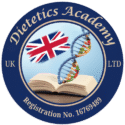Clinical Nutrition Diploma
Introduction
- What is Clinical Nutrition?
- Foundations of Clinical Nutrition
- The importance of Clinical Nutrition
Section 1: Nutrients
Chapter 1 — Macronutrients
First: Carbohydrates
- What are carbohydrates?
- What are the types of carbohydrates?
- Differences between carbohydrate types
- Sources of carbohydrates
- Recommended daily carbohydrate allowance
- Key benefits of carbohydrates
- Carbohydrates and the Glycemic Index
- How to choose quality carbohydrates
- Medical conditions affecting carbohydrate digestion
Second: Protein
- Definition of protein
- Protein structure
- Essential amino acids and their benefits
- Non-essential amino acids and their benefits
- Benefits of protein
- Dietary sources of protein
- Protein supplements
- Recommended daily protein intake
- Risks of excessive protein intake
- High-protein diets
Third: Fats
- Definition of fats
- Physiological functions of fats
- Types of fats: saturated, unsaturated, trans
- Differences between saturated and unsaturated fats
- Fatty acids and their roles
Chapter 2 — Micronutrients
First: Vitamins
- Definition and classification of vitamins
- Water-soluble vitamins: Vitamin C (Ascorbic Acid), B1 (Thiamine), B2 (Riboflavin), B3 (Niacin), B5 (Pantothenic Acid), B6 (Pyridoxine), B7 (Biotin), B9 (Folate), B12 (Cobalamin)
- Fat-soluble vitamins: A, D, E, K (K1/K2/K3)
Second: Minerals
- Iron, Copper, Zinc, Magnesium, Manganese, Iodine
- Potassium, Calcium, Sodium, Phosphorus
Section 2: Endocrine Glands & Hormones
- Endocrine glands secreting hormones: Hypothalamus, Pancreas, Thymus, Adrenals, Pituitary, Thyroid, Pineal, Parathyroids
- Types of hormones and their body functions
Section 3: Body Physiology
Chapter 1 — Body Fat
- Types of body fat: subcutaneous, brown, white, beige, essential, visceral
Chapter 2 — Muscles
- Muscle types: cardiac, skeletal, smooth
- White (fast-twitch) vs red (slow-twitch) muscle fibers
- Main functions of muscles
Section 4: Food Exchange System
- Bread & starches group
- Lean meats group
- Fats group
- Vegetables group
- Fruits group
- Fat-free milk group
Section 5: Calorie Tables
- Protein foods
- Nuts
- Dairy products
- Seafood
- Starches & legumes
- Fruits
- Juices
- Vegetables
Section 6: Key Equations
- BMI — Body Mass Index
- IBW — Ideal Body Weight
- AJBW — Adjusted Body Weight
- BMR — Basal Metabolic Rate
- Daily water requirement
Section 7: Clinical Nutrition Applications
Chapter 1 — Obesity
- Grades of obesity
- Causes of obesity
- Diagnosis of obesity
- Complications of obesity
- Types of obesity
Chapter 2 — Dietary Patterns
- Mediterranean • DASH • Flexitarian • MIND • TLC • Mayo Clinic • Volumetrics • Weight Watchers
- Keto • Paleo • Atkins • Endomorph • Carnivore • PSMF • Carb Cycling • Intermittent Fasting
Chapter 3 — Underweight
- Causes, symptoms, diagnosis, and healthy management
Chapter 4 — Pregnancy Nutrition
- Importance of good nutrition during pregnancy
- Weight gain targets & impact of obesity
- Nutrient requirements
- Recommended vs restricted foods
- Supplements
- Food safety
- FAQs & common myths
Chapter 5 — Lactation Nutrition
- Extra calorie needs
- Recommended foods & fluids
- Plant-based considerations
- Foods & drinks to avoid
Chapter 6 — Pediatric Nutrition
- Nutrient-dense choices & limiting empty calories
- Daily intake guidance by age & sex
Chapter 7 — Sports Nutrition
- Importance of healthy eating for athletes
- Core nutrients and suitable foods
- Pre/intra/post-workout guidelines
- Muscle-building supplements
- Strength vs endurance sports
- Bulking vs cutting
- Recovery nutrition
Chapter 8 — Medical Nutrition Therapy (By Disease)
- Diabetes: types; recommended & restricted foods
- Insulin resistance: symptoms, causes, diagnosis, treatment, prevention
- Hypertension: DASH & low-sodium plans
- Liver diseases: hepatitis, cirrhosis, failure, transplant, NAFLD
- IBS: diet approach; recommended & restricted foods
- Cardiovascular diseases
- Renal diseases
- Cancer patients during chemotherapy
Chapter 9 — Practical Applications
- Body composition analysis (InBody)
- Body-contouring/spot-fat devices: Cryo, Cavitation, RF, HIFU
- Mesotherapy
- Electromagnetic stimulation devices
